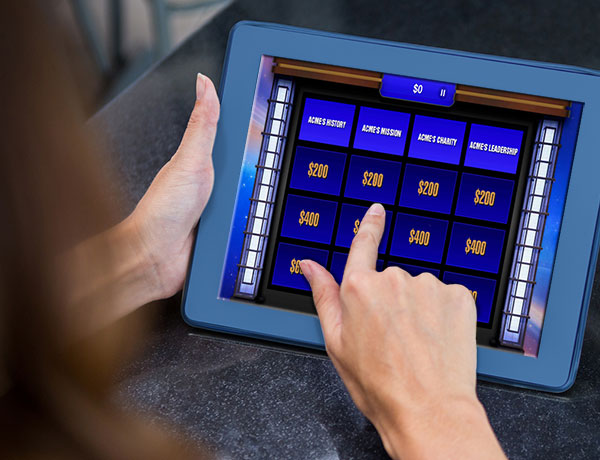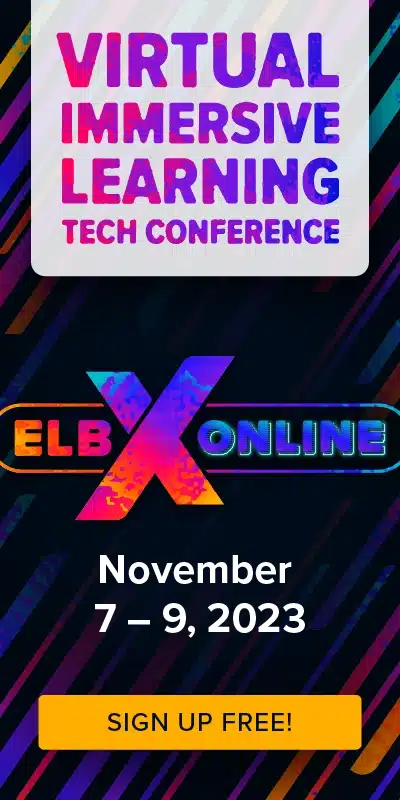by Carrie Wiser, Senior Instructional Designer, The Game Agency
In the majority of countries, people drive on the right side of the road. But in the UK everyone drives on the left. For visitors, this can make crossing the street as treacherous as a game of Frogger. That’s why many crosswalks in tourist areas include a message to LOOK RIGHT before entering.
Messages like these are nudges. They do not take away our freedom to choose, but they do aim to influence our choices or shape our behavior.
Nudge theory was popularized by the book Nudge: Improving Decisions About Health, Wealth, and Happiness (Thaler & Sunstein, 2008). Thaler, a behavioral economist, and Sunstein, a legal scholar, explained that despite our best intentions, we do not always make the best choices. We tend to rely on habits or biases (especially in unfamiliar situations) or take the easy path (especially when we are busy and overwhelmed). Nudges can give us a little push in a certain direction or remind us of things we have forgotten to do.
Instructional designers can apply elements of nudge theory to increase engagement in learning activities. From this perspective, instructional designers are “choice architects” who have “the responsibility for organizing the context in which people make decisions.” (Thaler & Sunstein, 2021). In other words, the way that you curate the learning environment, notify and remind your audience about learning opportunities, and motivate them to stay engaged can influence what and how they learn.
Getting started
First, conduct a training needs analysis. In addition to outlining the curriculum itself, define what and when to nudge. Consider what is necessary or timely at this moment vs. what you will need to remind people about over time. They can be very useful when you want to engage learners before or after a formal training session. For example, you can use them to drive engagement in spaced learning activities, share important content updates, or remind learners to complete annual compliance training.
Next, consider your target audience. Who is more likely to respond to different types of nudges and how many nudges it will take to engage them? You can look at analytics for overall engagement trends. Or, conduct interviews or surveys to find out what people are interested in, how they like to engage, and what drives their choices. Keep in mind that nudges promote, but do not guarantee, certain types of behavior—so do not expect a 100% response rate. Instead, set goals to motivate more people than you would have otherwise. You can provide a variety of options or experiment with different types of nudges to see what will have the greatest impact.
Gamifying your approach
Gamification, or applying game-based elements to learning activities, can improve the effectiveness of your nudges. Learning games, points, badges, leaderboards, competition, and rewards provide additional incentives to engage. There are many ways to nudge, and the list is constantly growing (Sunstein, 2014). Let’s focus on how gamification can help, here are some of the ways:
- Make it easy to participate
- Keep it simple
- Set social norms
- Remind people to learn
- Support goal-setting
Make it easy to participate
Think about how many emails you receive and how many websites you log into every day. Your learners are having the same experience. When you are trying to nudge people towards training, you can “cut through the noise” by lowering the barriers to entry. Present your content in a fun, user-friendly way and make it easy for players to play. For example, use a gamification platform like Arcades™ to curate and create a fun space for playing learning games. Then send notifications whenever new games are added and set up Single Sign-On to make it easier for players to log in.
Set social norms
People often make decisions based on what they see other people doing. So, nudge learners by showing them how other people are engaging with your learning games. For example, leaderboards drive competition—but they also show how many other people are participating. Recurring events like weekly, monthly, or “Beat the Boss” challenges nudge people to engage regularly in your training program. You can build an even stronger learning culture by providing opportunities to play together. For example, use Arcades™ to set up head-to-head and team-based challenges that appeal to a mixture of personality types, or host instructor-led Jeopardy! or Trivia games that bring your team together.
Remind people to learn
Whether people are busy, distracted, or procrastinating, they are going to forget things. Games offer rich analytics that will help you track engagement and set up well-timed nudges. For example, if you see that people are more likely to play learning games on Friday afternoon, send out a nudge on Friday at lunchtime. If people have been idle for a while, use rewards, points, or challenges to reframe games and then send a nudge to stir up new interest. To make nudges more effective, keep the messages short, 70 words or less (Kumar, 2021), send them at reasonable intervals (don’t overdo it), and only send them to the people who will directly benefit from the training event.
Support goal-setting
Even with the best intentions, only 8% of people who make a New Year’s resolution meet their goals (Diamond, 2013). The odds of success increase when those goals are tangible and obvious. Gamification nudges people to set goals and incentivizes goal-related behavior. For example, you can award badges for playing a certain number of games or extra points to players who complete the training within a certain time period. Tangible prizes (from gift cards to experiences) can reward players who show the most improvement and/or exceed their goals.
Keep it simple
Learners are less likely to respond to nudges when their training is complex, monotonous, or difficult to navigate. But well-designed games grab attention and provide a fun and engaging learning experience. Game templates, like the ones on The Training Arcade®, standardize navigation and make games easy to build and play. Support a micro-learning approach by making games quick—five to eight-minute games are ideal. Not only are short games more likely to drive engagement, they also force you to reduce complexity and really focus on what content or skills are most important.
The next time you construct a learning experience, consider when and how to give people a nudge. Then use gamification to support a culture of fun, and continuous learning that can improve engagement and performance.
Resources:
- BasuMallick, C. (2019, July 11). 4 ways to use the nudge theory to improve learning outcomes. Retrieved September 9, 2022, from Spiceworks website: https://www.spiceworks.com/hr/learning-development/articles/4-ways-to-use-the-nudge-theory-to-improve-learning-outcomes/
- Diamond, D. (2013, January 1). Just 8% of people achieve their new Year’s Resolutions. Here’s how they do it. Retrieved September 9, 2022, from Forbes website: https://www.forbes.com/sites/dandiamond/2013/01/01/just-8-of-people-achieve-their-new-years-resolutions-heres-how-they-did-it/?sh=633fb22b596b
- Dorscheidt, R. (2018, December 30). Gamification and Nudging: two sides of the same medal. Retrieved September 9, 2022, from Medium website: https://medium.com/@rob_83939/gamification-and-nudging-two-sides-of-the-same-medal-1e116d4aabc4
- Kumar, S. (2021, December 1). Learning and development – we tried “nudging” people to learn, and it worked! Retrieved September 9, 2022, from HR Consultancy Services in Delhi – Human Resource for Startups and SMEs website: https://headsupcorporation.com/blog/learning-and-development-we-tried-nudging-people-to-learn-and-it-worked/
- Sunstein, Cass R., Nudging: A Very Short Guide (September 22, 2014). 37 J. Consumer Pol’y 583 (2014), Available at SSRN: https://ssrn.com/abstract=2499658 or http://dx.doi.org/10.2139/ssrn.2499658
- Thaler, R. H., & Sunstein, C. R. (2021). Nudge: The Final Edition. New York, NY: Penguin.



